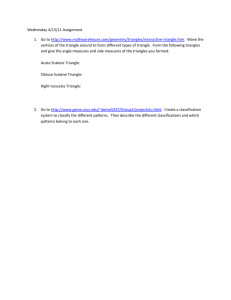1S3 (Timoney) Tutorial sheet 10 Name: Solutions
advertisement
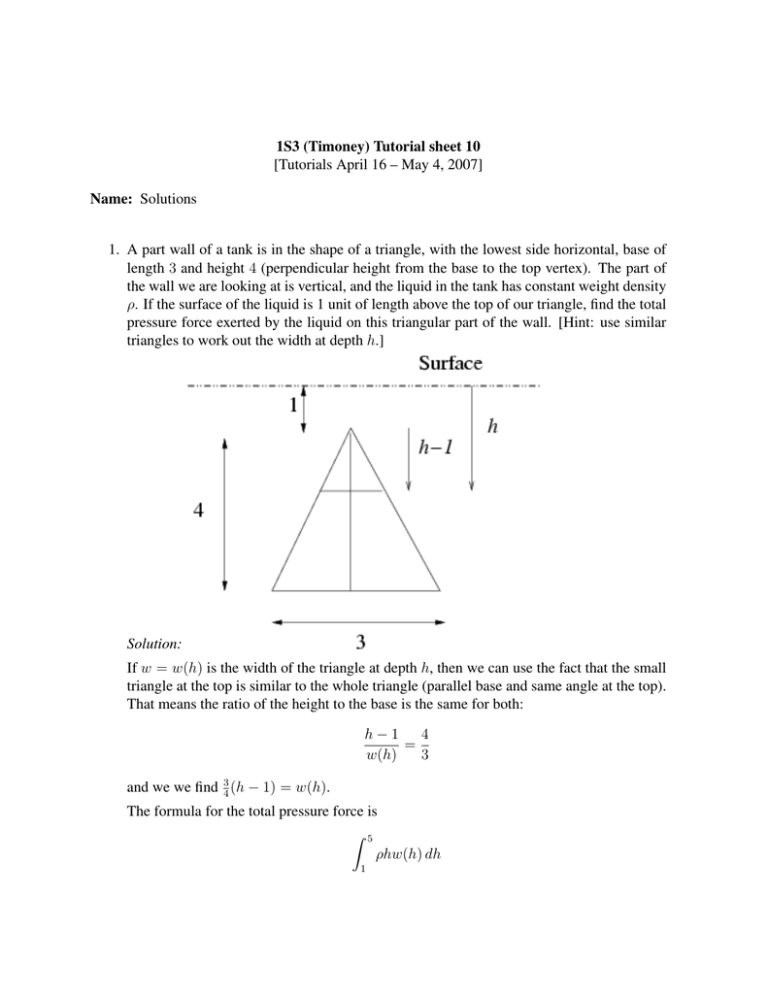
1S3 (Timoney) Tutorial sheet 10 [Tutorials April 16 – May 4, 2007] Name: Solutions 1. A part wall of a tank is in the shape of a triangle, with the lowest side horizontal, base of length 3 and height 4 (perpendicular height from the base to the top vertex). The part of the wall we are looking at is vertical, and the liquid in the tank has constant weight density ρ. If the surface of the liquid is 1 unit of length above the top of our triangle, find the total pressure force exerted by the liquid on this triangular part of the wall. [Hint: use similar triangles to work out the width at depth h.] Solution: If w = w(h) is the width of the triangle at depth h, then we can use the fact that the small triangle at the top is similar to the whole triangle (parallel base and same angle at the top). That means the ratio of the height to the base is the same for both: h−1 4 = w(h) 3 and we we find 34 (h − 1) = w(h). The formula for the total pressure force is Z 5 ρhw(h) dh 1 since the top has depth h = 1 and the biggest depth we need to worry about is h = 1 + 4 = 5. This comes to Z 5 Z 5 3 ρhw(h) dh = ρh(h − 1) dh 1 1 4 Z 5 3 = ρ(h2 − h) dh 4 1 3 5 3 h h2 = ρ − 4 3 2 1 3 125 25 3 1 1 = ρ − − ρ − 4 3 2 4 3 2 = 22ρ 2. A particle moving along the x-axis experiences a force F (x) = −κx when it is at position x. Find the work done by the force on the particle when the particle moves from position x = −1/2 to position x = 1/3. (Here κ is constant, for example a constant from Hook’s law.) Solution: The formula for the work done (by the force on the particle) is Z end Z 1/3 −κx dx F (x) dx = start −1/2 h κ i1/3 − x2 2 −1/2 κ κ 5 =− κ = − + 8 18 72 = Richard M. Timoney 2
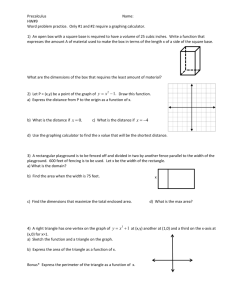


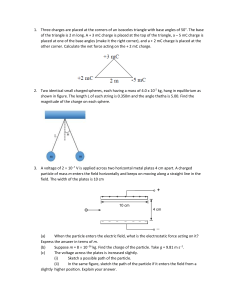

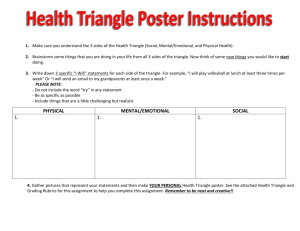
![Math 131 Practice Exam 3 on [ -1, 4].](http://s2.studylib.net/store/data/010538103_1-a851ef52d08f89241a99ddd9d94bbb2a-300x300.png)
